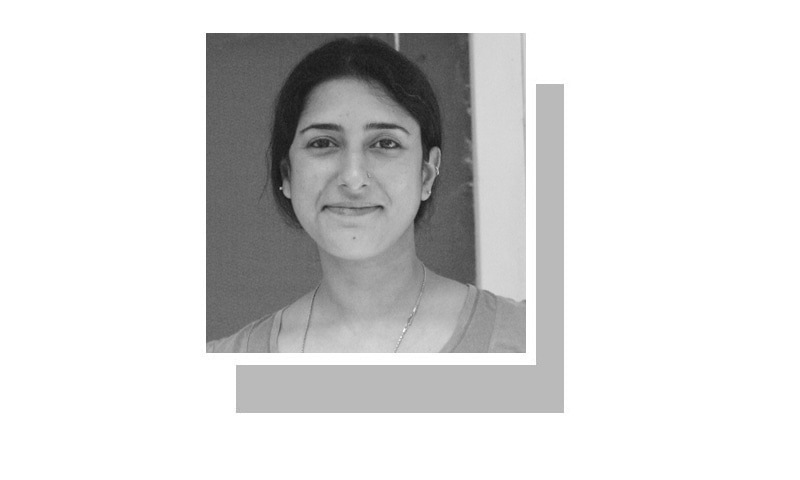THE world’s first five-star hotel at 10,000 feet (3,048 metres), and that too in Pakistan? Sounds like a dream come true for the incumbent government that made the promotion of local tourism spots a key part of its agenda. And yet, this is exactly what is claimed by Ejaz Ahmed Khan, owner of Hard Rock Hunza Resort and Villas, as reported by Fatima S. Attarwala in her report ‘Silver lining of the Attabad Lake disaster and CPEC’ (Dawn, July 19). Her investigations reveal details that are somewhat surprising in the context of this country, given its history of hifalutin plans that usually come to naught and are interspersed only by fancy design models and confident projections of a glorious tourist industry.
Commercial ventures such as inns and hotels and eateries (of varying price models) are possible only when there are customers to finance them — and customers come here in droves now. There is not just Attabad Lake, a recent phenomenon, but also traditional destinations including Naran, Kaghan, Karimabad, Skardu, Gilgit and many others. The key difference is, while many of these have always been tourist destinations, the current and projected number of visitors is such that makes one wonder how long the virgin land will remain untouched.
A number of factors have come together for Pakistan’s mountainous north to witness this rather sudden spate of good luck. The CPEC has contributed to improvements in the road networks. Then, the security situation has improved beyond measure — it was not all that long ago, after all, that Peshawar itself felt under threat because of the thundering, murderous onslaught of the banned TTP. Then there is a government that has made tourism a priority and has actually shown some progress on the matter. Apart from international travellers that these factors gave confidence to, there has been for the second summer the Covid factor, which has in a way forced a good number of local tourists to explore the worlds within their own border.
The increased number of tourists to the north seems a win-win situation for all; local economies are jump-started, the country gets a good press, there is added incentive for infrastructure development, etc.
What about tourism’s cost to the environment?
Then there’s the flip side: what about the cost to the environment? The areas being talked about are relatively pristine, delicate ecosystems that, while no stranger to the fallouts of tourist traffic, have not dealt with it in any huge numbers — which is what the indications are pointing to. What about waste collection and disposal? What of the impact on air quality of the vastly increased number of vehicles plying the roads, carrying not just visitors but also provisions from the plains to make their stay as smooth and luxurious as possible? What of sewage? Even in the metropolis of Karachi, by comparison, a vast amount flows directly into the sea, untreated. In these mountains, is the imprint of man to be allowed to leach into the very land itself and thus poison the lakes and rivers?
This is most obvious in places closer to urban centres, a case in point being Murree — a favourite, easily accessible spot to which people of the plains flee to escape the summer heat. Over just three days of Eid, more than 145,000 vehicles entered Murree while some 57,000 exited, according to the city traffic police spokesperson speaking in Rawalpindi on Saturday. A mere 340 traffic personnel were deployed to provide support.
I use Murree as a case in point because it is a picture of what the tourist boom in the north might look like in a few years, if not managed properly. As the aphorism goes, ‘If you can’t be a good example, at least be a horrible warning’ — this being the sad state of what was once (even in my own memory) a pristine destination.
Lastly, into this scenario must be woven the Covid situation. Promoting tourism is all very well (provided that proper oversights are in place), but can Pakistan really afford to allow — much less encourage — large gatherings of people in relatively close proximity as in the small towns of Gilgit or Skardu or Murree? And this at a time when variants are spreading like wildfire and vaccination levels are far lower than could have been desired? Consider, for example, that in Gilgit-Baltistan, where according to the chief minister the Delta variant is in the ascendancy and the positivity rate is high, no lockdowns have been announced and few restrictions are in place.
All these factors must be taken into consideration by the government before it literally starts allowing castles to be built in the air. Sometimes, things are better left alone than to be tinkered with in a myopic manner that proves damaging over the long term. At the very least, now that the summer vacations are nearly over and parts of the country are headed towards autumn, the state needs to immediately put on its thinking cap.
The writer is a journalist.
Published in Dawn, July 29th, 2021












































